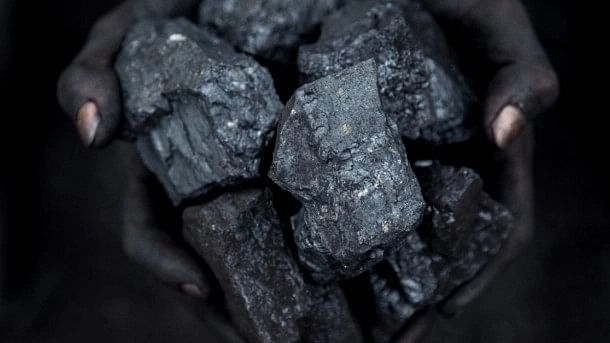
Representative image showing coal.
Credit: iStock Photo
Coal is the unglamorous fossil fuel. Unlike oil and gas, its prices do not fluctuate from day to day. It is also not significant in the energy mix of developed countries which rely largely on crude oil and natural gas. It, therefore, figures rarely in business news headlines, unlike the world oil and gas markets.
On the other hand, it is hugely significant for emerging economies such as India and China which need coal for a large share of their electricity production. The network of thermal generating plants in these countries needs a continuous supply of coal to run smoothly. Curtailment of supplies can result in severe power shortages for both industry and consumers.
No wonder then that at last month’s climate summit in Dubai, these two countries strenuously opposed efforts to include a reference to ‘phase-out’ of coal and altered it to ‘phase down’. In contrast, there is a stronger lobby in the developed world that has ensured that the other equally polluting fossil fuels — oil and gas — have been kept out of climate summit declarations.
Coal, on the other hand, was specifically brought into a summit statement in 2021 by COP 26 in Glasgow. Oil and gas were merely referred to as ‘fossil fuels’ even in the latest COP 28 in the United Arab Emirates. The declaration is considered historic as for the first time, it calls for a ‘transition away’ from all fossil fuels including coal, oil, and gas.
This is undoubtedly a positive step forward for reducing global emissions, but realistically speaking, it is simply not possible for India to suddenly put an end to its reliance on coal. It is comparable to the developed world’s dependence on oil and gas. It must be kept in mind that India may be cited as the world’s fourth largest carbon emitter, but has extremely low emissions on a per capita basis. As against the global per capita average of 4.7 tonnes of CO2 emissions, India’s is only 2 tonnes. This is a far cry from 14.9 tonnes for the United States and 11.4 tonnes for Russia.
It is against this backdrop that one must view the latest statement of coal and mines minister Prahlad Joshi on crossing the target of 1 billion tonnes of coal production annually by 2023-2024. He made it clear that the production of 780 million tonnes in 2022-2023 would be quickly ramped up to ensure that India relies almost exclusively on domestic coal output. Imports, he stressed, would soon be confined only to select varieties of coking coal for steel production.
The increase in coal output is proceeding along with a rapid expansion in renewable energy which is now reported to be about 44 per cent of total power generating capacity. However, output from coal-based thermal generation plants will also have to be stepped up to meet the growing power demand which is expected to double on a per capita basis by 2030. This will require adequate coal availability and consequently domestic output is being raised from 662 million tonnes in 2021-2022 to the projected 1 billion tonnes in the current fiscal.
Yet, reducing coal imports would mean reversing past directives allowing thermal generating plants to buy from abroad to meet local shortages. Logistics issues between the railways and the coal ministry in 2022 resulted in low inventories and power shortfalls in several states. This was when thermal plants were given the go-ahead to import to avoid widespread power cuts.
Ironically, this was around the same time that several European countries revived coal-based plants to deal with soaring costs of oil and natural gas in the wake of the Ukraine war. This, in turn, led to a spike in international coal prices, making imports more expensive. In the altered scenario of rising domestic output, power plants may no longer need to rely on purchases from abroad, except occasionally to meet peak demand.
In other words, coal usage will continue to be part of India’s energy scenario in the near future. The reason is simple: it is an easily available domestic resource which is much cheaper than imported fuels like crude oil and natural gas. Developed countries have been using other ‘cleaner’ fossil fuels like natural gas for the same reasons — easy availability and low cost. Like these economies, India must have the option of using the fossil fuel of its choice. Given the low per capita emissions and the push to enhance renewable energy capacity, there should be no compunctions in the continual use of coal.
(Sushma Ramachandran is a senior journalist.)
Disclaimer: The views expressed above are the author's own. They do not necessarily reflect the views of DH.